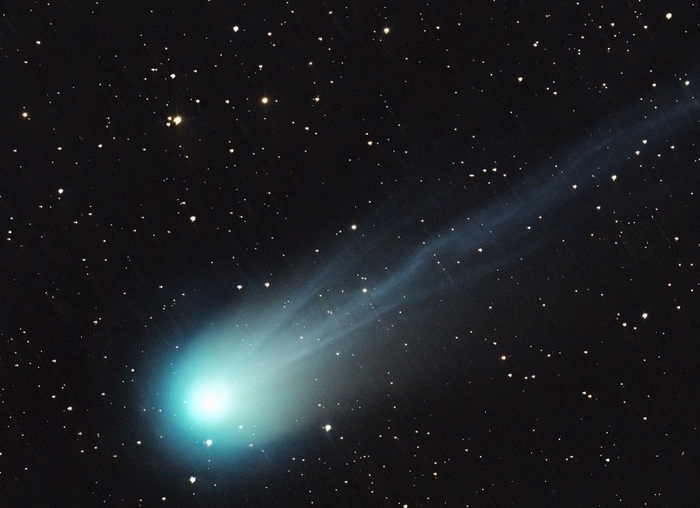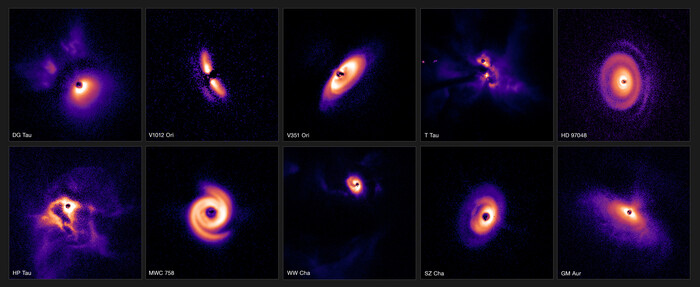Image of the Sun taken by the 'Solar Orbiter' spacecraft and released this month. Sebastian Carrasco (Europa Press)
It is conventional wisdom that a young individual of our species has much more energy, on average, than one who has already bleached his temples.
In the case of stars, it happens the other way around and it is the young ones that emit less energy.
This, if we keep the rest of the conditions equal, is a problem for the origin of life.
The paradox is simple in its formulation: how could the water of the early Earth remain liquid when the Sun was so much dimmer?
This still unresolved question is one of the most important in paleoclimatology.
Although it was the famous Carl Sagan and his colleague George Mullen in a 1972 publication who popularized the problem and proposed a solution by increasing greenhouse gases, they were not the ones who realized its existence.
The discrepancy between the low energy emitted by the Sun in its youth and the evidence for liquid water on the early Earth had already been pointed out by William L. Donn and collaborators in 1965.
Most of the energy that sustains life on our planet comes from the Sun and specifically from the thermonuclear reactions that take place inside it.
Models of the Sun predict that, in the past, specifically at the time it was born 4.57 billion years ago, the energy emitted by our star was 30% less than what it emits today.
The direct consequence of this change in the Sun's energy results in a completely frozen Earth for the first few million years of our planet's history, provided we keep all other parameters that control climate the same.
A weaker Sun would have turned our home into a real snowball.
In fact, this is what this feedback effect is known for: a greater amount of ice-covered surface evolves into a totally frozen planet.
Ice has the ability to reflect a greater amount of the light that reaches Earth and lowers the temperature causing more areas to be covered with ice and this means that more energy that comes from the Sun is reflected back to space, cooling even more the planet.
The direct consequence is completely ice-covered oceans and a state of the Earth known as “snowballing”.
The Sun was dimmer in its youth than it is now, and this is a simple consequence of the way it generates energy: as the hydrogen atoms are transformed into helium, the core of the star becomes denser and, as a result, the efficiency in power generation is higher and with it the amount of energy released by the star.
But why is this a problem?
Well, because there is evidence of the presence of liquid water, and even life, during that period on Earth.
Records of the Earth's early atmosphere and oceans date from the earliest Archean, from the end of what is known as the Late Bombardment Period to 2.5 billion years ago.
Fossil evidence of the earliest primitive life forms (prokaryotic microbes from the domain called Archaea and bacteria) appears in rocks between 3.5 and 3.7 billion years old;
however, the presence of ancient fragments of graphite (which may have been produced by microbes) suggests that life may have arisen sometime at least 3.95 billion years ago.
Solving the problem posed by the youth of the Sun on Earth would require knowing the composition of the Earth's atmosphere during the eons that the archaic period lasted, and here geochemical studies are obtaining very interesting results in recent years.
It would also help to obtain more elaborate models of the climate on Earth during that period where some of the solutions to the problem involve effects of the continents or induced by the reflectivity of the planet.
Making these models is very difficult because they require a degree of detail that makes them very complicated when taking into account the configuration of the oceans and the concentration of greenhouse gases.
Perhaps studying the problems posed by Earth's climate in the past will help us generate solutions for the future.
A future that, without wanting to be an alarmist, is already burning our fingers.
Let us hope that we do not go from a snowball Earth in the past to a fireball in the future with global change induced by greenhouse gases generated by human activity on the planet.
Eva Villaver
is a researcher at the Center for Astrobiology, dependent on the Higher Council for Scientific Research and the National Institute for Aerospace Technology (CAB/CSIC-INTA).
Cosmic Void
is a section in which our knowledge about the universe is presented in a qualitative and quantitative way.
It is intended to explain the importance of understanding the cosmos not only from a scientific point of view but also from a philosophical, social and economic point of view.
The name "cosmic vacuum" refers to the fact that the universe is and is, for the most part, empty, with less than one atom per cubic meter, despite the fact that in our environment, paradoxically, there are quintillion atoms per meter cubic, which invites us to reflect on our existence and the presence of life in the universe.
The section is made up of
Pablo G. Pérez González
, researcher at the Center for Astrobiology;
Patricia Sanchez Blazquez
, full professor at the Complutense University of Madrid (UCM);
and
Eva Villaver
, researcher at the Center for Astrobiology.
You can follow
MATERIA
on
,
and
, or sign up here to receive
our weekly newsletter
.

/cloudfront-eu-central-1.images.arcpublishing.com/prisa/4FY33LQWITYVDB6GBIWNYLKKGA.jpg)












